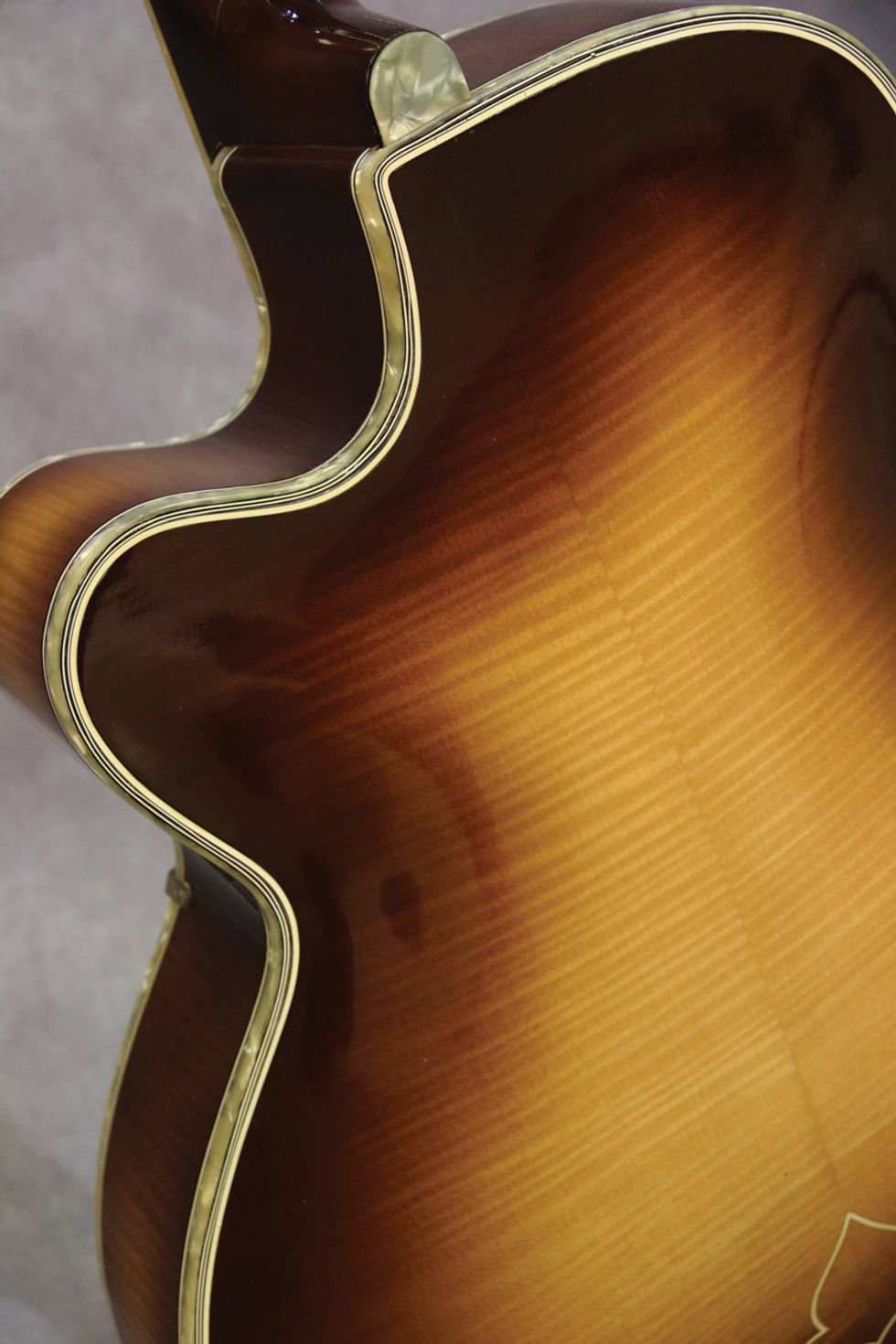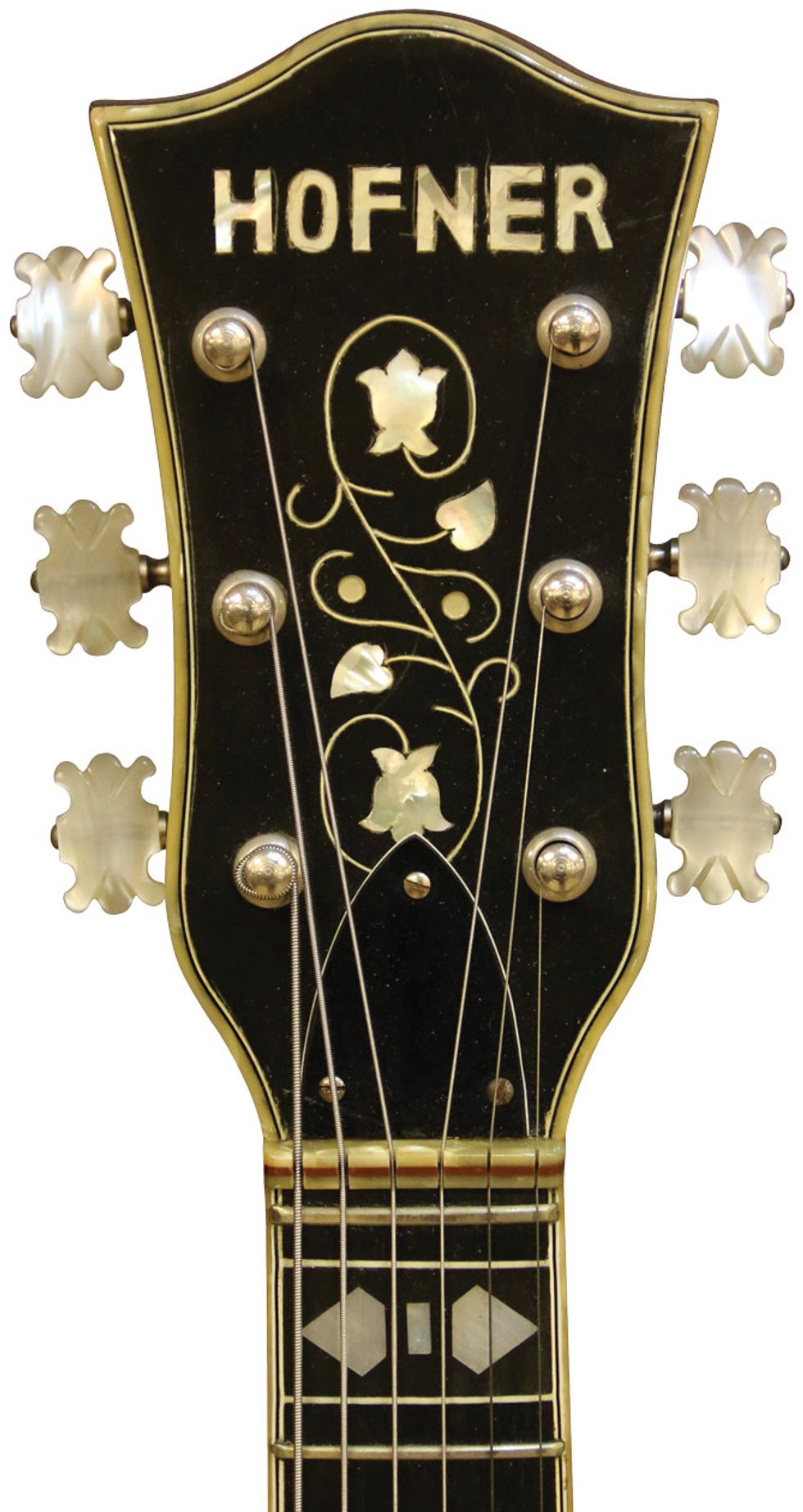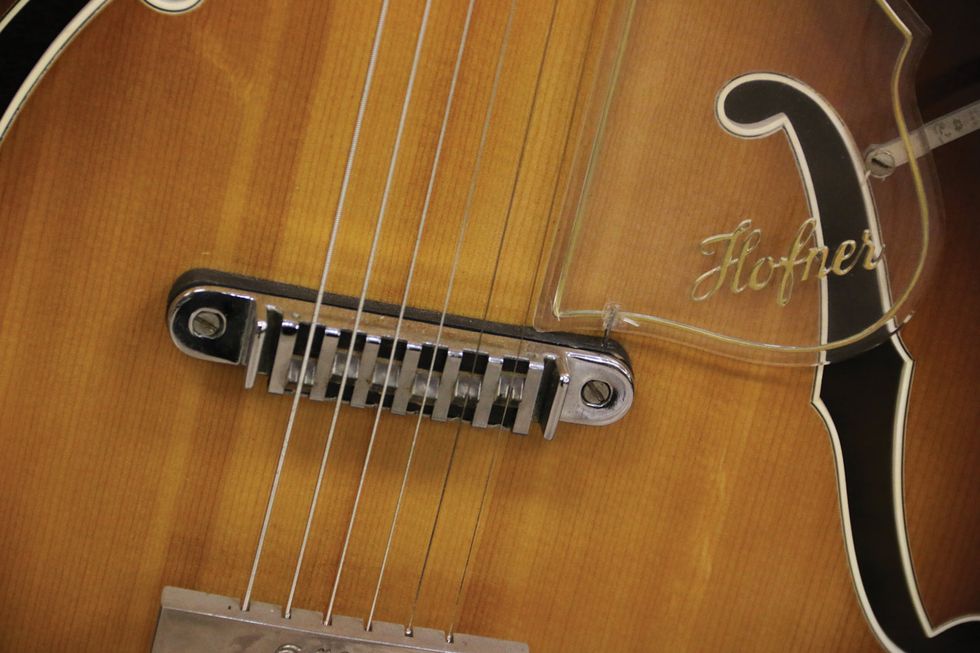Hofner is a German brand, but with some research, it becomes clear that the company’s roots are a little more complicated. It was actually founded by luthier Karl Hofner in 1887 in Schönbach, a city in what was then Austria-Hungary. World War I changed that, and today the locale is renamed Luby, and it is part of the Czech Republic.
During the first Great War, Hofner switched from instruments to making shipping crates and boot soles for the German army. But after the war, Germans were expelled from the region and Hofner set up his instrument factory in West Germany—at a former work camp in a town called Möhrendorf. This month’s elegant if oddly named Hofner Committee was likely built in a less creepy location: Hofner’s second plant, in Bubenreuth, part of Germany’s Bavarian region.
Although Paul McCartney really put the company on the international map by playing a 500/1 violin bass in the Beatles, Hofner was already making fine modern instruments, like this Committee. When it came into our shop a while back, we were totally blown away by the pristine shape it was in and how great it plays and sounds. We learned that the owner we acquired the guitar from rarely took it out of the case for nearly the entire time he had it. (He was the second owner and had the guitar’s first bill of sale.) So it’s no surprise that this 1960 or 1961 Hofner Committee, in its original case, is in excellent condition. What an incredible find!
Produced from 1954 to 1969 in its acoustic incarnation, and until 1972 in its electric format, the Committee ruled as something akin to a poor man’s Gibson L-5 archtop, with a measurement of 17.5" across the lower bout and a 3" width, a pair of classic-shaped f-holes, an adjustable bridge, and a trapeze tailpiece. Among the guitar’s more distinctive appointments are eight double-diamond inlays set within bars running along its 22-fret neck, a zero fret, marbled binding, six floral plastic tuners, and a clear Perspex pickguard bearing the Hofner name. Our example wears a sunburst finish, but they also came in natural.
The Committee’s body was listed as having a spruce top and a bird’s-eye maple back and sides in the Hofner catalog, but this one sports a flame-maple back and sides.
Clearly dressed to impress, the Committee was Hofner’s top-shelf archtop, and an electric model entered production alongside the acoustic version in 1956. The model had an ornate “frondose” (which means “leaf-like”) headstock until 1963, when it adopted the more Gibson-like headstock—essentially a tulip-style headstock—that had already been associated with Hofner’s President model.
The more ornate “frondose” headstock typically comes on Committees of this era, but this guitar boasts a tulip-style headstock that appeared on other Hofner models.
This particular Hofner Committee is a rare bird. Perhaps due to parts shortages or other production problems at the plant, this guitar has some character traits typically found on other models of the day. For example, the tulip headstock and fretboard inlay patterns are what you would find on the ES-335-like Verithin and the 1959-’60 Club 60 model Hofners of the time. In the company catalog, the Committee’s body is listed as having a spruce top and a bird’s-eye maple back and sides, but this one sports a flame-maple back and sides. That’s more in line with the President model. And the steel bridge was more common to electrics, while Hofner acoustics of the era typically had ebonized wood bridges.
Note the steel bridge, rather than the ebonized wooden bridge typical of the ’60/’61 Committee, and the cool
see-through Perspex pickguard.
What’s absolutely certain is that this guitar is gorgeous. According to the Hofner Guitar Project website, the price for an acoustic Committee in 1961 was £48 to £50, or about $175. Today, a model with this one’s rare features and excellent condition sells for about $2,600.


















![Rig Rundown: Russian Circles’ Mike Sullivan [2025]](https://www.premierguitar.com/media-library/youtube.jpg?id=62303631&width=1245&height=700&quality=70&coordinates=0%2C0%2C0%2C0)

















